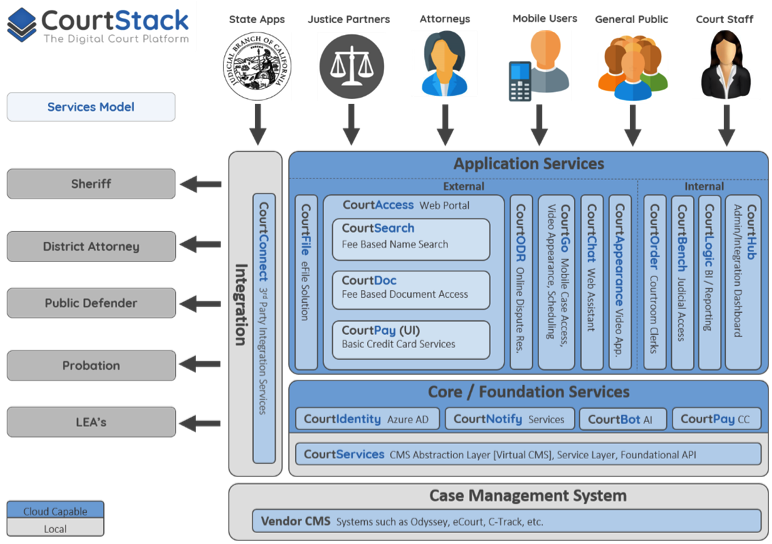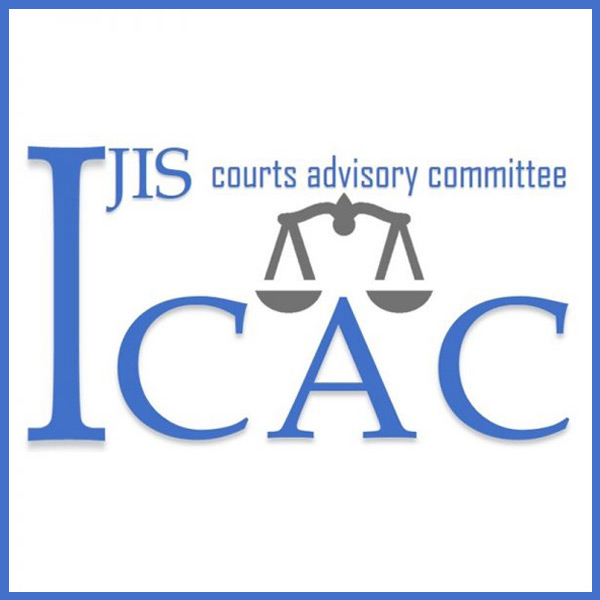A COLUMN DEDICATED TO THE EXCHANGE OF IDEAS ON INFORMATION SHARING IN JUSTICE
Sue Humphreys, IJIS Courts Advisory Committee, Vice Chair

“Technology is a useful servant but a dangerous master.” These words, spoken by Nobel Peace Prize winner Christian Lous Lange over 80 years ago, certainly have staying power, don’t they?
If you have ever rushed through an online reservation system in near panic while vying for a ticket/room/seat, answered a pesky survey for access to a must-read article, or even waded through a sea of information in your CMS to find that one critical case element, you’ve been “mastered” by technology (in this instance, software). Even when the software is helpful, like when it warns of low inventory, it may have prodded you down a path that best serves it (or its owner) and not necessarily the one that’s best for you.
The problem is intensified in our court systems, isn’t it? If your court is like most, you have implemented a rather complex case management system (CMS) with the intent of it serving all (or at least most) of your business needs. But all too often, courts still scramble to manage and complete their work efficiently due to system shortcomings or because they are trying to use the CMS in a way that was not quite intended. When this happens, your software can quickly morph from serving your mission to commandeering it, and you find yourself:
- Accepting its shortcomings and doing the best you can in whatever way it allows;
- Investing money or at least time for enhancements from your vendor;
- Investing in other third-party or custom-built software to fill the gap.
No matter the choice, courts often report disappointment with the final product’s suitability for the job or with the way new and existing systems communicate and work together. Time and again it seems that the software ends up in charge of what we do and how we do it rather than the other way around.
So where does this leave us? Smack-dab at the door of opportunity. And it’s wide open!
Reimagining Court Technology
Barely two years have passed since we first covered the Application Component Model in this column, and we’re already seeing its game-changing-potential starting to take shape (see Joint Technology Committee, Introduction to the Next-Generation Court Technology Standards Application Component Model, 2017). Sure, there’s more to do but a lot has already happened to help usher this work forward. Let’s look at where we’ve been and what’s on the horizon, but first, a quick reminder about what the component model is and why you should care.
The Application Component Model (aka Next-Gen CMS, aka the Court Component Model, or CCM) is just a way of looking at court business needs more purposefully and with a finer focus than in the past. It presents the various pieces of a court technology environment with the intent of connecting them in a way that meets current needs and lets a court add on or swap out pieces as their needs (and/or technologies) change. Even if your court is content with current technology and not shopping for new systems, periodically reexamining your business this way is valuable because:
- It exposes opportunities to refresh thinking behind the purpose of your work, impact on resources and customers, and ways to measure usefulness, performance, and outcomes;
- You may spot fragmented or poorly executed processes that don’t serve your court or customers well;
- It gets you thinking about where and why your court is ‘cutting corners’ to make an existing system work;
- It may very well save your court money (perhaps even a lot of money).
Simply put, looking at business needs through the lens of the CCM situates you more squarely in the driver’s seat, with your court deciding how software can best serve its mission.
Rolling Up Our Sleeves
The COSCA/NACM Joint Technology Committee, the National Center for State Courts (NCSC), and the IJIS Courts Advisory Committee (ICAC) have brought together court practitioners and technologists to collaborate on CCM development. Working groups are focused on various aspects of the CCM and have already accomplished a great deal.
System components have been defined, and the list is being tweaked. While it’s safe to say that components will expand or contract as this work continues, the current set is quite robust and includes:
| Case Manager | Participant Manager | Scheduling/Calendars | Forms/Document Generation |
| Document/Content Manager | Judicial eBranch Tools | Public/partner Access | Online Dispute Resolution |
| Litigant Portal | eFiling Manager | eFiling Service Provider | Digital Recording |
| Supervision | Accounting/Financials | Payment Processing | Interview Engine |
| Compliance Monitoring | Electronic Transcripts | Remote Audio/Visual | Evidence/Exhibit Manager |
| Notifications | Calculators | Jury Management | Knowledge Management |
| Enterprise Security | Identity Management | Integration Engine | Workflow Orchestration |
| Business Rules Engine | Search Engine | Reporting and Analytics |
Conversations about whether certain components can or should be grouped is ongoing, as are discussions around whether components can standalone or be coupled with one or more other components to create a solution of sorts. More details are available here, and an updated definitions document will be published in coming months.
Component connector and exchange standards are being developed, with online dispute resolution (ODR) as the initial pilot. A working group has completed the first version of the technical interface standards describing interactions (inputs/outputs) between ODR and other systems, like the CMS, eFiling, and those used by partners that may refer individuals to ODR.
The Court Tech Directory has been published, allowing courts to quickly find available components and the vendors that provide them. The Directory is provided as a free service to the court community and helps courts get straight to the heart of available solutions for their specific business challenges. The Directory will be updated as the CCM expands, so that it accurately reflects the CCM library. You can explore the current Directory here.
A Slight CCM Twist in California!
Having had their fill of court applications driving court business destiny, counties in California have teamed up to fast track their vision of the CCM, which they are calling CourtStack(read their initiative paper here).
As with much of the country, California courts deal with an assortment of case management and add-on applications (mobile case access, partner portals, etc.) that are necessary for a modern court system to conduct business. Also, like most courts, these systems have typically been tightly coupled in a way that significantly limits innovation, flexibility, and choice. CourtStack aims to change all that with a common, standards-based platform that extends operability between add-on solutions and the CMS solutions used in California.
The unique aspect of CourtStack is its “Virtual CMS,” an abstraction layer that sits on top of the branch CMS implementation. According to CourtStack developers, this abstraction layer allows higher-level components and applications to be written against it rather than the CMS directly, giving applications written for CourtStack the freedom to run on any CMS for which there is a virtual CMS implementation.

The CourtStack initiative, being led by Santa Clara, Los Angeles, Orange, and Monterey counties in collaboration with the Judicial Council of California Information Technology Division (JCIT), is aligned with the CCM and the NCSC Court Technology Framework for applications. We’ll be paying close attention to this innovative approach and suggest that you do too.
Learn More About Mastering Court Technology
If you agree that technology should serve your court and not rule over it, you are among like-minded colleagues. A wealth of information, and real paths forward, are under development for the CCM, and you can learn more by visiting the links in this column. Also, be sure to join us at CTC 2019 in New Orleans, where several educational sessions will focus on the CCM (including a live introduction of California’s CourtStack).


